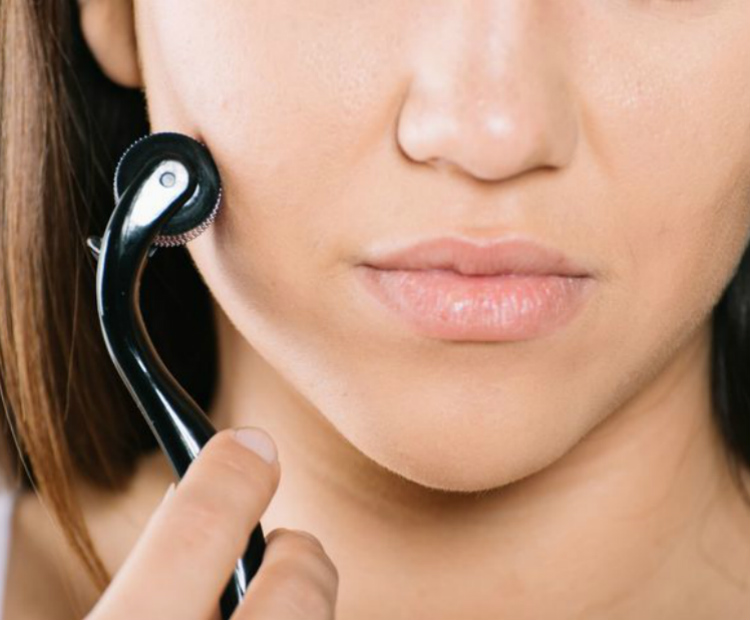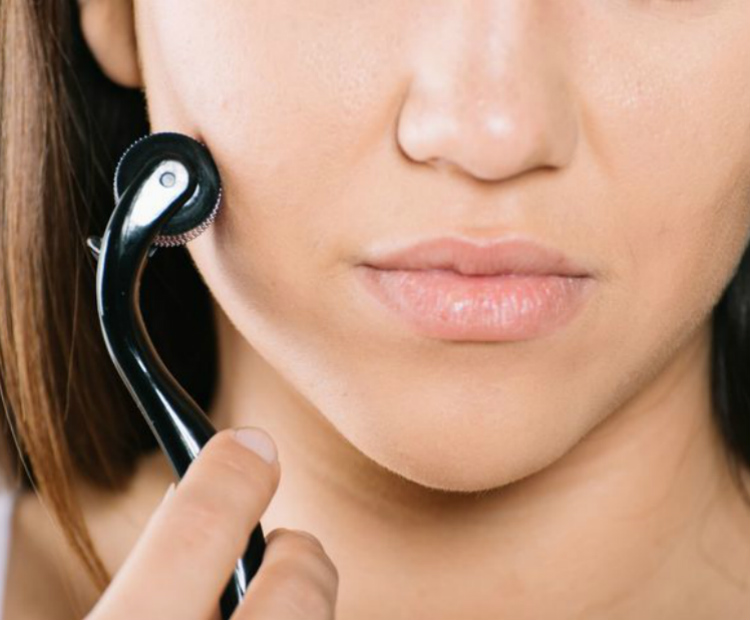

It may not make sense that injuring your skin leads to better skin, but that’s the science behind microneedling. A cluster of tiny needles in this device pricks the skin in order to tell the body to create more collagen. While microneedling has shown immense promise for some skin concerns, the treatment has a few downsides as well. It’s important to weigh them both before starting treatment at the doctor’s office or at home.
Pro: It Works on Scars
Many suffering from acne scarring swear by the ability of microneedling to affect real change on their faces. A 2009 study published in the Journal of Cutaneous and Aesthetic Surgery focused on 36 test subjects with varying degrees of scarring over the course of at least three microneedling treatments. Thirty-four of those patients had marked improvement in the appearance of their scars with no permanent adverse side effects. More than 80 percent graded the treatment as “excellent.” Microneedling can also be used to fade the appearance of stretch marks, lessen scarring from burns and reduce the appearance of wrinkles. Microneedling also works on any skin tone, since the risk of pigmentation issues after the procedure is low—depending on how deep the microneedling goes. Microneedling can be done very superficially or very deeply.
Con: It Might Cause Scars
Microneedling is generally considered a low-risk procedure, but that’s dependent on a home device being properly calibrated and used correctly. Needles longer than half a millimeter and bent needles increase scarring risk and also invite infections. Longer needles also hurt more. The redness after treatment can last a few days and there’s increased sensitivity to the sun post-treatment.
Pro: Less Recovery Time and More Affordable Than Laser
Depending on the type of microneedling treatment you receive, recovery can take as little as three days after a procedure at the doctor’s office, whereas laser-resurfacing recovery can take up to a week or more. It’s also more affordable than some of the pricier laser-resurfacing treatments. Home microneedling devices range from $20–$50 or more, while treatments at the doctor’s office are typically $400 a session. Compare that to the average cost of laser skin resurfacing, which is $2,000 for ablative and $1,000 for non-ablative, and can add up if you need multiple sessions.
Con: You Don’t See Results Right Away
Even if it’s done correctly and consistently, results won’t be seen until the new collagen has time to grow, which usually takes about six weeks. The recovery time for treating scars created by burns can also be slow. It can take up to a year after beginning treatment to show results.
Tips for Choosing and Using Microneedle Devices
High-quality, well-maintained at-home microneedling devices are essential to keep skin healthy. In addition to skewed needles on poor-quality devices that can hurt your skin, dull needles can also leave you with damage. Poorly cleaned devices can invite infection. Guidance from a professional on which topical skincare products to use with the device can help avert irritation. It’s best not to use these devices on a daily basis and opt for once or twice a week; otherwise you risk injuring your skin over time.
This article has been reviewed by board-certified dermatologist Dr. Emmy Graber.


